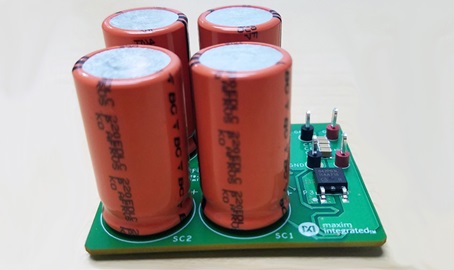Overview
Design Resources
Description
Supercapacitors, by their very name, provide unique benefits in modern electronics. One critical application of supercapacitors is dv/dt suppression. In the dv/dt suppression application, a battery's internal resistance creates a voltage drop at the output of the battery when a load is connected, usually a heavy load. For example, when a 10A load is connected to a 10V battery with an internal resistance of 0.2Ω, the voltage drop is 2V. As the current increases, the battery output voltage decreases, called dv/dt. In order to avoid loss of voltage, designers can opt to design a very large battery into their system. Another more elegant choice is to use a supercapacitor for dv/dt suppression, where the supercapacitor provides additional energy, suppressing the load transient and preventing the battery voltage from collapsing. Such a design allows for a smaller battery, momentary heavy load conditions, and prolonged battery life.
This design includes two parts, the first part uses the MAX406 to charge the supercapacitors with 1A constant current; the second part uses the MAX1725 and MAX985 to realize dv/dt suppression.
The MAX406 is a single, low-voltage, micropower, precision op amp designed for battery-operated systems. It features a supply current of less than 1.2μA that is relatively constant over the entire supply range, which represents a 15 to 20 times improvement over industry-standard micropower op amps. A unique output stage enables this op amp to operate at ultra-low supply current while maintaining linearity under loaded conditions. In addition, the output is capable of sourcing 1.8mA when powered by a 9V battery.
Features & Benefits
- +2.5V to +10V Single-Supply Range
- 500μV Max Offset Voltage (MAX406A)
- < 0.1pA Typical Input-Bias Current
- Output Swings Rail-to-Rail
- Input Voltage Range Including Negative Remote Alarm Notification (RAI)
Documentation & Resources
-
MAXREFDES1151 Design Files2/16/2021ZIP2 M
Support & Training
Search our knowledge base for answers to your technical questions. Our dedicated team of Applications Engineers are also available to answer your technical questions.

